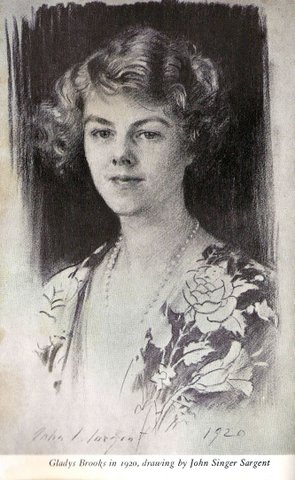Category Beatrix Farrand

Elizabeth Hoyt & Gladys Rice, Landscape Gardeners
What happened to the landscape gardening firm of Hoyt and Rice? Why didn’t the two mentees of Beatrix (Jones) Farrand, Charles Sprague Sargent and the staff at the Arnold Arboretum ever start their planned business together? While a footnote in the story of the landscape of the British Embassy, Washington, one wonders if the partnership […]

Henry Adams and Lady Lindsay in Washington
Within the intersecting circles of the story of the British Embassy, Henry Adams is the center point in its early history. His beloved home across from the White House brings together several elements of this Landscape of a Washington Place: the Embassy’s first landscape gardener (Elizabeth Sherman Hoyt, later Lady Lindsay); Beatrix Jones (later Farrand […]

Centre Island Revisited
The first ambassador’s wife to live in and influence the new British Embassy in Washington, designed by Sir Edwin Lutyens, was the spirited Lady Lindsay. She has born Elizabeth Sherman Hoyt and grew up and died on Centre Island, New York. The place was formative to her character and early career, instilling a love of […]

The Second World War as Seen in the Embassy Landscape
The transformation of Washington during the Second World War can be seen in structural changes at the British Embassy. Quickly assembled wartime additions to the Lutyens Chancery were erected in 1940. When those proved inadequate for the burgeoning staff’s needs, property was leased throughout the city and land bordering the Embassy’s service road and Observatory […]

Elizabeth Lindsay at the End
After leaving Washington and diplomatic life, Elizabeth Lindsay was to finally have a home and garden entirely of her own making. She initially intended to stay in New York for only a while before following Sir Ronald to England. But with the outbreak of war, the condition of her own health and unspecified “family problems,” […]

The End of the Lindsay Era and the Beginning of the War Years in the Embassy’s Gardens
Ronald Lindsay retired from the British Ambassadorship in Washington and set sail for England on 30 August 1939, landing just after war was declared on Germany. Elizabeth Lindsay never saw her husband again. His work and failing health confined him to his country for the duration. He died in 1945 and was buried next to […]

The Embassy Gardens and Dumbarton Oaks
With the ridge of Clifton Hill between them, the British Embassy and Dumbarton Oaks have a shared legacy and stories, the memory of which has nearly been lost over the years. The original 19th-century estates of both sites were once part of the same Royal land grant, the Rock of Dumbarton. Before each gained renown, […]

Before their Washington Gardens: Americans in Paris
Even before her marriage to the diplomat Ronald Lindsay, Elizabeth Hoyt occupied the same worldly and cultivated social spheres as her close friends and future neighbors in Washington, Robert and Mildred Bliss of Dumbarton Oaks. Along with Hoyt’s aunt Elizabeth Cameron and the historian Henry Adams, they were bound by friendships formed in Paris and […]

The Education and Career of an Embassy Gardener
Introduction The wife of the first Ambassador to live in the new Massachusetts Avenue British Embassy happened to be a trained landscape architect and an American, Lady Lindsay (1885–1954). The extent of her influence on the Ambassador’s Residence has been little known and unexamined, particularly her relationship with the grand estate practically bordering the Embassy, […]

Frederick H. Brooke
The on-site architect Frederick H. Brooke (1876-1960) came to play a pivotal role in the Lutyens’s British Embassy. Stamp and Greenberg, in their important study published in Lutyens abroad (2002), give him a significant amount of credit, relating how he was caught between the most often-absent British architect and the constraints of both the Treasury […]

Recent Comments